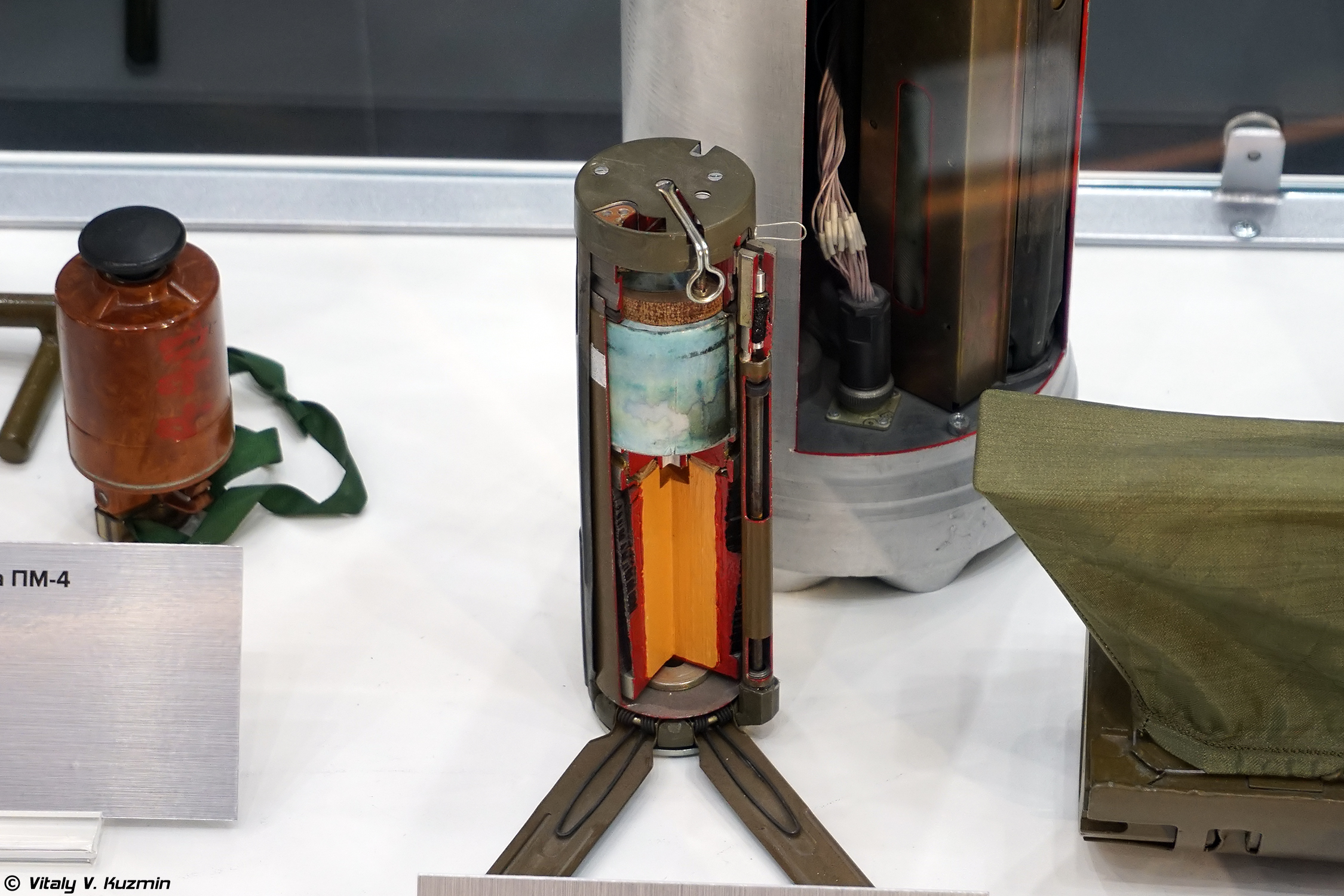|
Pugyuru
is a Japanese four-panel comic strip by Tohiro Konno. The manga was first serialized in the Japanese manga magazine Monthly Magazine Z in June, 2001. Pugyuru was adapted into an anime series that was broadcast on April 12, 2004 on the television station Kids Station. The initial broadcast lasted for thirteen episodes and ended on July 5, 2004. Characters * :A tsukkomi character. Except for the first syllable, her name is never revealed in the comic. Anyone who hears her name, whether they want to or not, faces a terrible fate. She has called herself Margaret in a dream. She has a flat chest. She takes great effort to drink milk (and cola), but it has no effect. She has short hair, but the front part is blonde, and the rear part is black, it's implied that this is natural and reverses when she's asleep. Quite an unusual hair style. She has a black cowlick on the top of her head. She can use it as a fishing rod. When something pulls on her ahoge, the back part of her hair j ... [...More Info...] [...Related Items...] OR: [Wikipedia] [Google] [Baidu] |
Magazine Z
was a Japanese seinen mixed-media magazine published by Kodansha, aimed at adult males, but particularly at hardcore anime and manga fans, featuring articles as well as manga tied into popular franchises. Original manga were also featured in the magazine. It was announced in September 2008 that ''Magazine Z'' would be discontinued. The last issue shipped on January 26, 2009. Manga artists and series serialized in ''Magazine Z'' ;Hideaki Nishikawa * '' Apocrypha Getter Robot Dash'' (2008 to 2009) ; Yuu Watase * '' Sakura Taisen'' (2005 to 2009) (manga commissioned by Sega Enterprises) ; Kia Asamiya * '' Batman: Child of Dreams'' (2000 to 2001) (manga commissioned by DC Comics) ;Hoshi Itsuki * '' Kurau Phantom Memory'' (2005) * ''Skies of Arcadia'' (2000 to 2002) ; Baku Yumemakura/ Sei Itoh * '' Kouya ni Kemono Doukokusu'' (2004 to ???) ;Momotarō Miyano/Masamune Shirow * '' RD Sennou Chousashitsu'' (2008 to 2009) ; Takuya Fujima * '' Deus Vitae'' (1999 to 2002) * '' Free ... [...More Info...] [...Related Items...] OR: [Wikipedia] [Google] [Baidu] |
Yasunori Mitsuda
is a Japanese composer, musician, and sound producer. He is best known for his work in video games, primarily for the ''Chrono'', ''Xeno'', '' Shadow Hearts'', and '' Inazuma Eleven'' franchises, among various others. Mitsuda began composing music for his own games in high school, later attending a music college in Tokyo. While still a student, he was granted an intern position at the game development studio Wolf Team. Mitsuda joined Square upon graduation in 1992 and worked there as a sound effects designer for two years before telling Square's vice president Hironobu Sakaguchi he would quit unless he could write music for their games. Shortly after, Sakaguchi assigned him to work on the soundtrack for '' Chrono Trigger'' (1995), whose music has since been cited as among the best in video games. Mitsuda went on to compose for several other games at Square, including '' Xenogears'' (1998) and '' Chrono Cross'' (1999). He left the company and became independent in 1998. In 200 ... [...More Info...] [...Related Items...] OR: [Wikipedia] [Google] [Baidu] |
Humour
Humour (English in the Commonwealth of Nations, Commonwealth English) or humor (American English) is the tendency of experiences to provoke laughter and provide amusement. The term derives from the humorism, humoral medicine of the ancient Greeks, which taught that the balance of fluids in the human body, known as humours (Latin: ', "body fluid"), controlled human health and emotion. People of all ages and cultures respond to humour. Most people are able to experience humour—be amused, smile or laugh at something funny (such as a pun or joke)—and thus are considered to have a ''sense of humour''. The hypothetical person lacking a sense of humour would likely find the behaviour to be inexplicable, strange, or even irrational. Though ultimately decided by personal taste (aesthetics), taste, the extent to which a person finds something humorous depends on a host of variables, including geographical location, culture, Maturity (psychological), maturity, level of education, inte ... [...More Info...] [...Related Items...] OR: [Wikipedia] [Google] [Baidu] |
Organism
In biology, an organism () is any life, living system that functions as an individual entity. All organisms are composed of cells (cell theory). Organisms are classified by taxonomy (biology), taxonomy into groups such as Multicellular organism, multicellular animals, plants, and fungi; or Unicellular organism, unicellular microorganisms such as protists, bacteria, and archaea. All types of organisms are capable of reproduction, Developmental biology, growth and development, homeostasis, maintenance, and some degree of response to Stimulus (physiology), stimuli. Beetles, squids, tetrapods, mushrooms, and vascular plants are examples of multicellular organisms that Cellular differentiation, differentiate specialized tissue (biology), tissues and organ (anatomy), organs during developmental biology, development. A unicellular organism may be either a prokaryote or a eukaryote. Prokaryotes are represented by two separate Three-domain system, domains – bacteria and arc ... [...More Info...] [...Related Items...] OR: [Wikipedia] [Google] [Baidu] |
Zettai Ryouiki , a phrase that refers to the area of exposed skin between a miniskirt and thigh-high socks
{{disambig ...
may refer to: * ''Zettai Fukuju Meirei'', a game set in Postwar West Germany, known as ''Absolute Obedience'' in English * ''Zettai Heiwa Daisakusen'', a shōjo manga written by Akane Ogura * ''Zettai Karen Children'', a Japanese shōnen manga * ''Zettai Kareshi TV'', a live adaptation based on the manga ''Absolute Boyfriend'' on Fuji TV in 2008 * ''Zettai Muteki Raijin-Oh'', a 51 episode Japanese anime television series * ''Zettai Zetsumei Toshi 3'', the third game in the disaster series known as ''Disaster Report'' in the US * Zettai ryōiki refers to the area of bare skin in the gap between overknee socks and a miniskirt or shorts. It can also be used to describe the clothing combination. The term first became widespread in otaku slang as one of the attributes of '' moe'' characte ... [...More Info...] [...Related Items...] OR: [Wikipedia] [Google] [Baidu] |
Knee Socks
Knee highs are hosiery that cover the feet and legs up to the knee. A fashion accessory for casual and classic cool or warm weather apparel. Typically worn by women in many societies, they are sometimes worn with modern semi-formal attire. Unlike ordinary socks, they are generally made of nylon or other stocking materials. There were also different types and uses of knee highs for women. Knee highs became popular during the 1960s and 1970s, worn in regular knee high length or top of the knee length so they could be folded over at the top, with the increase in popularity of the mini dress and miniskirt. This style continued throughout the 1980s with above the knee and at the knee length dresses. And in the '80s they were worn not only with boat shoes and flats but also with sneakers that could be worn both dressy or casual. They come in many colors and patterns and transparency levels. They are more popular in cold weather, because they keep the feet and lower legs warm. They are s ... [...More Info...] [...Related Items...] OR: [Wikipedia] [Google] [Baidu] |
Shaved Ice
Shaved ice is a large family of ice-based desserts made of fine shavings of ice or finely crushed ice and sweet condiments or syrups. Usually, the syrup is added after the ice has been frozen and shaved—typically at the point of sale; however, flavoring can also be added before freezing. The dessert is consumed worldwide in various forms and ways. Shaved ice can also be mixed with large quantities of liquid to produce shaved ice drinks. Many shaved ices are confused with " Italian ice", which is derived from the similar Italian dessert known as " granita". However, Italian ice, also known as "water ice", often has the flavoring (fruit juice or other ingredients, like almond) incorporated into the sugared water before it is frozen. Shaved ice—especially highly commercial shaved ice (such as that found in food chains or from street vendors)—is often flavored after the ice has been frozen and shaved. Snow cones are an example of shaved ice that is flavored after production. H ... [...More Info...] [...Related Items...] OR: [Wikipedia] [Google] [Baidu] |
Cola
Cola is a carbonated soft drink flavored with vanilla, cinnamon, citrus oils and other flavorings. Cola became popular worldwide after the American pharmacist John Stith Pemberton invented Coca-Cola, a trademarked brand, in 1886, which was imitated by other manufacturers. Most colas contain caffeine originally from the kola nut, leading to the drink's name, though other sources have since been used. The Pemberton cola drink also contained a coca plant extract. His non-alcoholic recipe was inspired by the coca wine of pharmacist Angelo Mariani, created in 1863. Most modern colas have a dark caramel color, and are sweetened with sugar and/or high-fructose corn syrup. They come in numerous different brands. with Coca-Cola and Pepsi being among the most popular. These two companies have been competing since the 1890s, a rivalry that has intensified since the 1980s. Flavorings The primary modern flavorings in a cola drink are citrus oils (from orange, lime, and l ... [...More Info...] [...Related Items...] OR: [Wikipedia] [Google] [Baidu] |
Yuki-onna
is a spirit or yōkai in Japanese folklore that is often depicted in Japanese literature, films, or animation. She may also go by such names as ''yuki-musume'', cited by ("snow daughter"), ''yuki-onago'' ("snow girl"), ''yukijorō'' (雪女郎, "snow woman"), ''yuki anesa'' ("snow sis"), ''yuki-onba'' ("snow granny" or "snow nanny"), ''yukinba'' ("snow hag") in Ehime, ''yukifuri-baba'' ("snowfall hag") in Nagano. They are also called several names that are related to icicles, such as '' tsurara-onna'', ''kanekori-musume'', and ''shigama-nyōbō''. Origins Yuki-onna originates from folklores of olden times; in the Muromachi period ''Sōgi Shokoku Monogatari'' by the renga poet Sōgi, there is a statement on how he saw a yuki-onna when he was staying in Echigo Province (now Niigata Prefecture), indicating that the legends already existed in the Muromachi period. Stories In legends from the Ojiya region of Niigata Prefecture, a beautiful woman came to visit a man and be ... [...More Info...] [...Related Items...] OR: [Wikipedia] [Google] [Baidu] |
Squid
True squid are molluscs with an elongated soft body, large eyes, eight arms, and two tentacles in the superorder Decapodiformes, though many other molluscs within the broader Neocoleoidea are also called squid despite not strictly fitting these criteria. Like all other cephalopods, squid have a distinct head, bilateral symmetry, and a mantle. They are mainly soft-bodied, like octopuses, but have a small internal skeleton in the form of a rod-like gladius or pen, made of chitin. Squid diverged from other cephalopods during the Jurassic and occupy a similar role to teleost fish as open water predators of similar size and behaviour. They play an important role in the open water food web. The two long tentacles are used to grab prey and the eight arms to hold and control it. The beak then cuts the food into suitable size chunks for swallowing. Squid are rapid swimmers, moving by jet propulsion, and largely locate their prey by sight. They are among the most intelligent o ... [...More Info...] [...Related Items...] OR: [Wikipedia] [Google] [Baidu] |
Sumo Wrestler
A , or, more colloquially, , is a professional sumo wrestler. follow and live by the centuries-old rules of the sumo profession, with most coming from Japan, the only country where sumo is practiced professionally. Participation in official tournaments () is the only means of marking achievement in sumo, with the rank of an individual based solely on official wins. The number of active peaked at 943 in May 1994, at the height of the " Waka- Taka boom," but had declined to 665 by January 2022. Terminology In popular use, the term can mean any sumo wrestler and be an alternative term to (sumo practitioner) or the more colloquial . The two kanji characters that make up the word are "strength/power" and "gentleman/samurai"; consequently, and more idiomatically, the term can be defined as "a gentleman of strength". Within the world of professional sumo, is used as a catch-all term for wrestlers who are in the lower, un-salaried divisions of , , and . The more prestigio ... [...More Info...] [...Related Items...] OR: [Wikipedia] [Google] [Baidu] |
Self Destruct
A self-destruct is a mechanism that can cause an object to destroy itself or render itself inoperable after a predefined set of circumstances has occurred. Self-destruct mechanisms are typically found on devices and systems where malfunction could endanger large numbers of people. Uses Land mines Some types of modern land mines are designed to self-destruct, or chemically render themselves inert after a period of weeks or months to reduce the likelihood of friendly casualties during the conflict or civilian casualties after the conflict's end. The Amended Protocol II to the Convention on Certain Conventional Weapons (CCW), amended in 1996, requires that anti-personnel land mines deactivate and self-destruct, and sets standards for both. Landmines currently used by the United States military are designed to self-destruct after between 4 hours and 15 days depending upon the type. The landmines have a battery and when the battery dies, the land mine self-destructs. The self-d ... [...More Info...] [...Related Items...] OR: [Wikipedia] [Google] [Baidu] |




.jpg)

